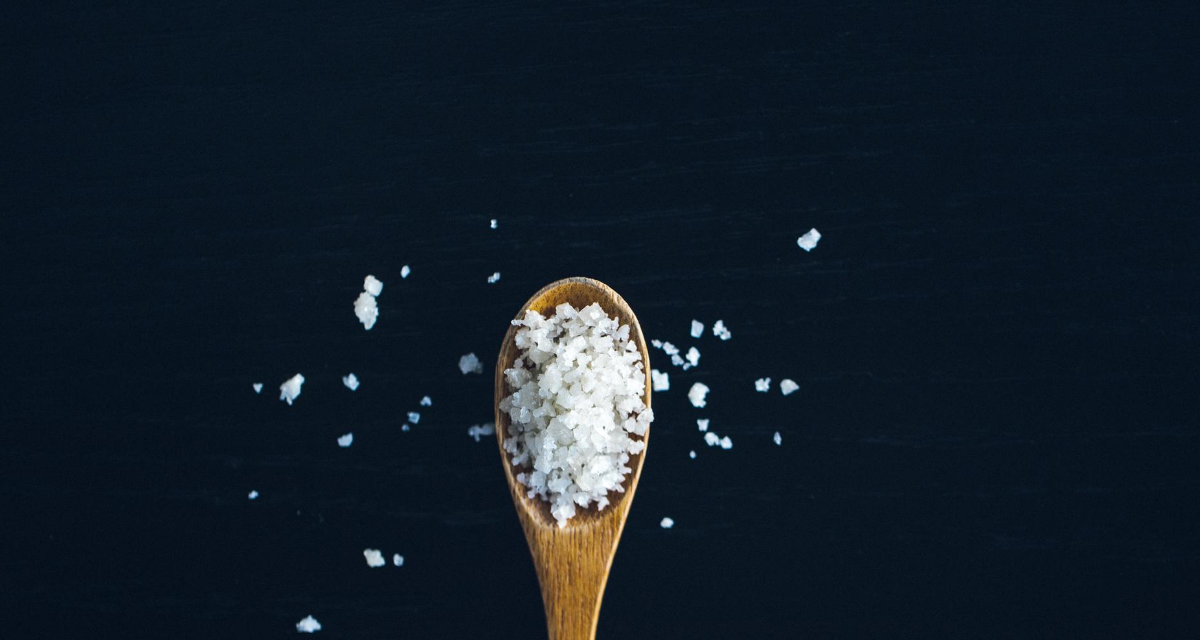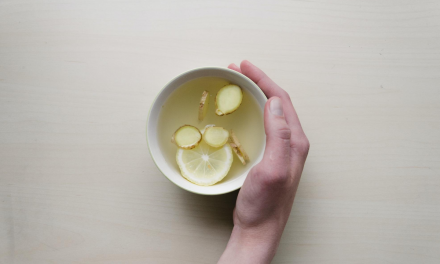Salt, an important mineral, is vital to human life. Without it, you would die. Most people are aware that too much of it causes water retention, high blood pressure and kidney and heart problems. According to Chinese Physiology, there is a relationship between salt and the health of the kidneys, urinary tract, adrenals, bones (including bone marrow, teeth), fluid metabolism, hair, and sex organs (including libido).
Salt has the most grounding and centering nature of all the flavors. The right amount and quality can strengthen energy; build healthy bones, improve digestion; moisten dryness; detoxify poisons from poor quality foods; enhance your ability to focus more clearly; and, yes, help your body lose excess weight. However, there is great potential for its misuse. Poor quality salt and too much of it creates the opposite effect.
Symptoms of salt (and other mineral) imbalances
Bone problems, anemia, metabolic imbalances, depressed mental activity, weak digestion, gas, bloating, poor circulation, feeling cold, difficulty losing excess weight, frequent fatigue, arthritic pain in hands, arms, feet, knees, lower back and shoulders, and many emotional imbalances from anxiety to extreme fear.
What Your Salt Cravings are Telling You
Sodium, a major element in salt, is plentiful in eggs, seafood and all meats and some vegetables. Naturally occurring salt is found in many foods, both animal and vegetal. Processing removes much of these natural salts, and manufacturers add more salt (sugar too) for flavor. Nearly all canned and packaged foods have salt added to them.
If your diet consists of high amounts of processed foods, meat, dairy and eggs, and rich, greasy foods, you are likely getting an excessive intake of sodium. Eating more than is necessary of these foods and then adding salt to them sets the stage for insatiable cravings for sugar, coffee and/or alcohol. These are depleting foods and will help your body eliminate excesses of salt and other minerals.
Some of you may be familiar with the vicious cycle of ingesting high amounts of salt or heavy, rich foods and then experiencing insatiable cravings for sweets, coffee or alcohol. Then, after eating them, the cravings reverse and you find yourself unable to resist salty snacks or more animal food. Choosing extremes to balance opposite extremes will leave you frustrated, overweight, and in poor health.
Your body has an innate wisdom and is always seeking to create balance. It speaks to you through your cravings. The problem is most people don’t know how to accurately interpret these messages in healthy ways. For help in understanding your cravings, binges, and food addictions, schedule a session.
Balanced Use of Salt
Many people abuse salt, eating nearly 6x the recommended, thus giving salt a bad name. Most of today’s commercial salt is the highly refined chemical variety that is 99.5% or more sodium chloride, with additions of anti-caking chemicals, potassium iodide, and sugar to stabilize the iodine. The common table salt that most people use is refined through heat processing, bleached with chemicals to make it white, then aluminum stearate, another chemical, is added so the salt doesn’t clump. Most salt is denatured and highly refined as are most foods in the modern diet.
Even common refined sea salt has been stripped of nearly all of its sixty trace minerals. You can buy good quality sea salt in which sunshine alone has been used to extract it. Some good brands include Lima, Muramoto, and Mexican “Si” sea salt. You may have to go out of your way to find it, and it is well worth the effort for the health benefit.
Salt labeled sea salt is typically the refined pure white variety. Whole natural sea salt is in larger crystals, granules, or a powder. All salt originates from the sea. Whole salt from the sea has a mineral profile similar to that of your blood, and when used properly, helps to maintain good health and eliminate cravings. Stone Ground “Si” Brand of sea salt is my favorite.
There is a tendency to overeat when foods are highly refined. It’s your body’s attempt to get the nutrients that have been lost in the processing. Salt cravings are often a craving for the many minerals that are lacking in chemically grown food and lost in food processing. Your body craves more salt in an attempt to replace minerals lost by a poor diet, and to capture the wholeness that it instinctively knows should be there.
Alternatives to the Salt Shaker
Vegetables from the sea have been used for thousands of years for their ability to prevent disease, prolong life, and impart beauty and health. Eating small amounts of them on a regular basis is a balanced way to include the salty flavor in your diet. Sea Vegetables are the most nutrient dense group of foods available.
Just as there are many varieties of vegetables that grow in the earth, there are many varieties of sea vegetables that grow in the ocean, each with a distinctive nutrient profile. Some general common properties they exhibit include: detoxifying, diuretic, remove residues of radiation in the body; act as lymphatic cleansers; alkalize the blood; benefit the thyroid; improve water metabolism, moisten dryness, and resolve phlegm. Sea vegetables are useful for weight loss and for resolving cholesterol and fat in the blood. They help your body metabolize sugar and fat more quickly and efficiently.
Some people are unwilling to try sea vegetables fearing they will have an unpleasant taste. I assure you that, when cooked properly, they can be quite tasty, and are a good compliment to many foods you are already eating. Click here for recipe for Arame sea vegetable, which has a milder flavor than some of the others.
Another common sea vegetable is Kombu which aids the digestive system when eaten in small amounts consistently. It greatly increases the nutritional value of all food prepared with it, and is considered the most completely mineralized food. It is available at Natural Food and Specialty stores, packaged in dry strips. Simply break off a 1-2 inch piece and put it in the pot when you are cooking beans, grains, soups, and some vegetable dishes. After it is cooked, chop it in small pieces and stir back into the dish you cooked it with. Kombu has no taste—just great health value!
I never use, nor do I recommend, sea vegetables from Hong Kong or China. My personal preference is Mitoku brand which can be purchased at Natural Import Co. online.
Some people prefer to use sea vegetable condiments which are loaded with minerals and flavor. Here are a few that you can click on to learn more.
Maine Coast Sea Vegetables Organic Kelp Granules Salt Alternative
Sea Seasonings – Dulse Granules
Sea Seasonings Triple Blend Flakes
Eden Shake Furikake- Eden Foods Condiments
Our human development begins in a saline solution in the womb and we are nourished by blood that has almost the same composition as sea water. It makes sense to eat foods that comes from the sea.
A True Super Food – Miso
Miso is an extremely nutritious and health-supportive food and an effective way to include the salty flavor in your diet. There is much confusion about the use of soy foods. Science has a very fragmented approach to analyzing food values and has convinced many people whose health would improve from using miso, that all soy is bad. All soy is not created equal. Some are extremely beneficial (especially for cancer) while others are harmful and should be avoided. I’ll be discussing the truth about soy in my upcoming Webinar.
Miso is a fermented soybean paste made by combining soybeans, a culture (koji, salt and various grains, beans or vegetables, then fermenting for 3 months to 3 years. The longer it is aged, the stronger the taste. You may be familiar with miso soup if you’ve eaten in a Japanese restaurant, and soup is the most common use for miso. I’ve found that miso soup in restaurants is far too salty. If you make your own, you control the amount of miso you add which should be ½ to one tsp. per cup of liquid. Many popular websites and cookbooks use 5-10x that amount which which will create many health issues.
Miso contains healthy bacteria and enzymes which aid digestion and food assimilation. Studies show that those who regularly use miso suffer significantly less from cancer and heart disease.
It contains Amino acids, B12, minerals (including calcium, iron). Miso helps protect the body against radiation and heavy metal poisoning. Miso has 25x more genistein (a potent anticancer agent) than unfermented soy foods such as tofu and soymilk. Miso reduces the risk of coronary heart disease; protects cells from free radicals and aging. The lactobacillus fermentation increases the quantity, availability, digestibility and assimilability of nutrients.
Miso is effective in reducing chronic pain. It breaks down and discharges cholesterol, neutralizes the effects of smoking and environmental pollution, alkalizes the blood, prevents radiation sickness, neutralizes the effects of chemicals, medicines, and a poor diet, and strengthens blood quality. Miso contains lactic acid bacteria and enzymes which aid digestion and food assimilation.
Studies have shown those who eat miso soup daily have fewer cases of certain types of cancer and heart disease. Researchers have found that women who east miso soup daily reduced their incidence of breast cancer by 40-50%. The findings are published in the online edition of the U.S. based Journal of the National Cancer Institute.
Miso may be used instead of salt or soy sauce as a seasoning and it’s best to buy unpasteurized miso. It is a live food and prolonged cooking destroys the beneficial organisms. Add unpasteurized miso to preparations just before removing from heat. Like salt, miso is better assimilated when combined with foods due to its concentrated nature. My personal favorite is South River brand. It comes in glass jars and is in the refrigerated section of Natural Food stores or can be ordered from South River’s website.
Smart Use of Salt
Get in the habit of using a small pinch of good quality sea salt in cooking only. Avoid adding salt to the food on your plate. Eat small amounts of sea vegetables regularly–daily is not too often. Incorporating miso soup 3-7x a week is an excellent way to improve your health and longevity. Of course, eliminating processed foods, salty snacks, and commercial salt is important.
If you’re overweight, sea vegetables, miso and other good quality salt used in cooking only can help you get rid of the excess.
Have you consumed far too much salt in the past and are suffering the health consequences now? Generally speaking, I would still use sea vegetables and miso soup for their detoxifying abilities, and limit use of salt.
Try to cultivate the mindset that there is no good or bad food–only cause and effect. There is no one-size-fits-all approach to good health. One man’s medicine can be poison to the next. Please eat for your constitution and condition rather than following the ever-changing popular trends of the day. You’ll experience greater health in every way.
There are many popular food plans and no lack of internet advice from thousands of people who lack an understanding of food therapeutics and have little or no professional training. Good marketing sells fads to people who are desperately trying to recover good health and lose weight. Current scientific findings often contradict previous findings by the same experts. A perfect diet that will bring everyone good health does not exist and accepting this fact is a good starting point for achieving balanced health.
Consider some professional guidance for the right nutrition and customized holistic health plan for reversing your health and weight issues, and removing the degenerations that cause them. You can greatly improve every aspect of your physical, mental and emotional health with a customized holistic approach. Schedule a Holistic Health and Nutrition session with Deborah Barr, 35-year Holistic Health and Nutrition Counselor. You’ll be on your way to better health. Sessions can be done by phone, zoom, facetime, Skype, or at Pittsburgh office.
All articles and information on this website are protected under copyright laws and are owned by Deborah Barr, Whole Health Resources. You may use this article in your print or electronic publication at no charge. I ask that you contact me know in what publication you will use my article and when it will be published. You are required to use bio and copyright information at end of each article and mail a copy of the publication or link to online publication to me once published.
If you are in need of additional articles or fresh article ideas, contact me. I will be happy to discuss some relevant article topics.





